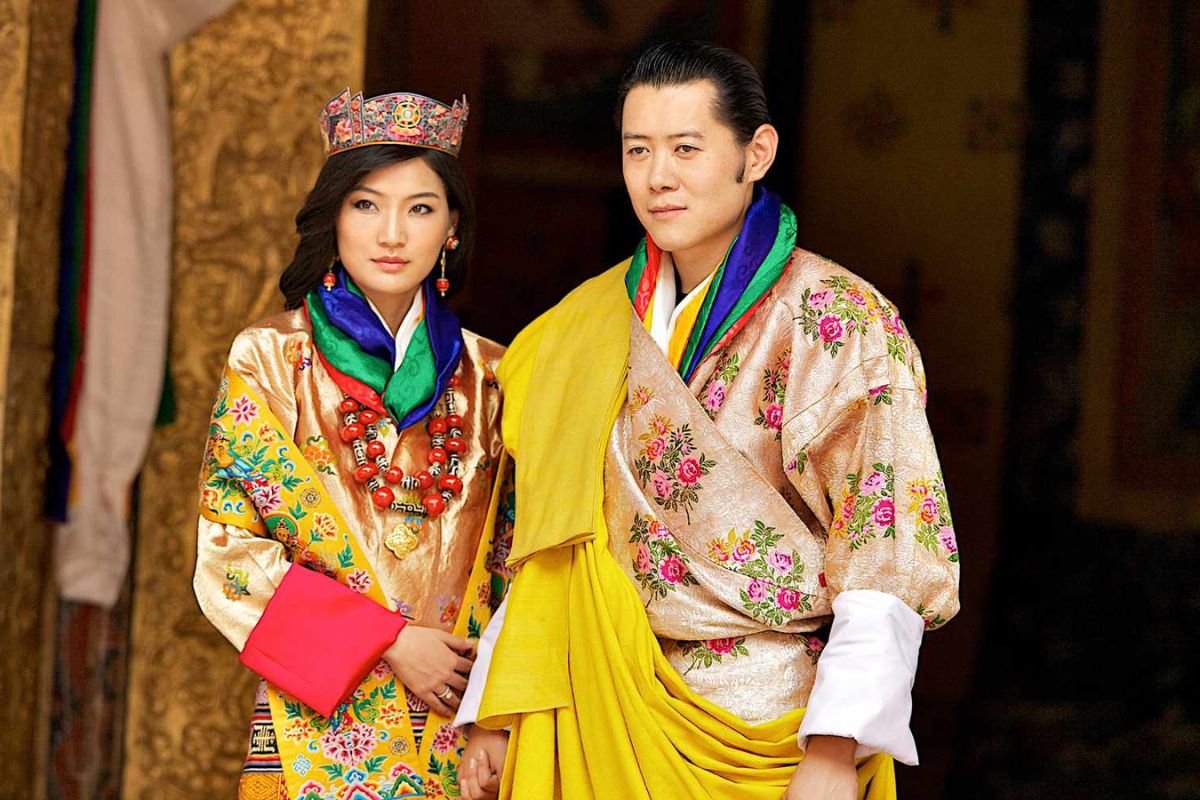
Ever wondered what makes Bhutanese culture so unique? Nestled in the Himalayas, Bhutan is a small kingdom with a rich tapestry of traditions, beliefs, and practices that captivate the imagination. From the colorful festivals to the serene monasteries, Bhutan offers a glimpse into a way of life deeply rooted in spirituality and harmony with nature. Bhutanese culture emphasizes Gross National Happiness over material wealth, making it a fascinating study in balance and contentment. Whether it's the vibrant dances, intricate art, or the deep respect for the environment, Bhutan's cultural landscape is a treasure waiting to be explored. Ready to dive into 25 intriguing facts about this enchanting culture? Let's get started!
Bhutan's Unique Cultural Heritage
Bhutan, a small Himalayan kingdom, is known for its rich cultural heritage. This unique blend of traditions and modernity makes it a fascinating place. Let's dive into some intriguing facts about Bhutanese culture.
-
Gross National Happiness: Bhutan measures success by Gross National Happiness (GNH) instead of Gross Domestic Product (GDP). This philosophy prioritizes well-being over economic growth.
-
Traditional Dress: Men wear a knee-length robe called a "gho," while women wear an ankle-length dress known as a "kira." These garments are mandatory in schools and government offices.
-
Dzong Architecture: Dzongs are fortress-like structures that serve as administrative and religious centers. They are architectural marvels with massive walls and intricate woodwork.
-
Festivals: Tshechu festivals are held annually in various districts. These events feature masked dances, music, and rituals, celebrating Bhutanese culture and Buddhist teachings.
-
Language: Dzongkha is the national language. However, various dialects are spoken across the country, reflecting its diverse ethnic groups.
Spirituality and Religion
Religion plays a significant role in Bhutanese life. Buddhism, in particular, shapes many aspects of their culture and daily practices.
-
Buddhism: Vajrayana Buddhism is the state religion. Monasteries and stupas dot the landscape, and monks are highly respected.
-
Prayer Flags: Colorful prayer flags are a common sight. They are believed to spread prayers and blessings when the wind blows.
-
Monastic Schools: Many young boys join monastic schools to become monks. These institutions provide religious and secular education.
-
Sacred Sites: The Tiger’s Nest Monastery, perched on a cliff, is one of Bhutan’s most sacred sites. Pilgrims undertake a challenging hike to reach it.
-
Astrology: Bhutanese people consult astrologers for important life decisions, such as marriage and moving into a new house.
Daily Life and Customs
Daily life in Bhutan is a blend of tradition and modernity. Customs and practices reflect the country's deep-rooted cultural values.
-
Hospitality: Bhutanese people are known for their hospitality. Guests are often served butter tea and snacks as a sign of respect.
-
Archery: Archery is the national sport. Competitions are social events with singing, dancing, and plenty of cheer.
-
Cuisine: Bhutanese cuisine features spicy dishes, with "ema datshi" (chili and cheese) being a staple. Red rice and buckwheat are common staples.
-
Marriage: Traditional marriages involve elaborate rituals. The bride and groom often wear traditional attire, and ceremonies can last several days.
-
House Construction: Traditional houses are built without nails. Instead, wooden beams are interlocked, showcasing impressive craftsmanship.
Environmental Harmony
Bhutan places a strong emphasis on environmental conservation. This commitment is evident in their policies and daily practices.
-
Forest Cover: Over 70% of Bhutan is covered in forests. The constitution mandates maintaining at least 60% forest cover at all times.
-
Organic Farming: Bhutan aims to become the world’s first 100% organic farming nation. Chemical fertilizers and pesticides are discouraged.
-
Wildlife Protection: The country is home to diverse wildlife, including the endangered snow leopard. Conservation efforts are a priority.
-
Hydropower: Bhutan generates most of its electricity from hydropower. This renewable energy source is a significant export to neighboring countries.
-
Plastic Ban: Single-use plastics are banned. This policy helps reduce pollution and protect the environment.
Arts and Crafts
Bhutanese arts and crafts are deeply rooted in tradition. They reflect the country's spiritual and cultural heritage.
-
Thangka Paintings: Thangkas are religious paintings on cotton or silk. They depict Buddhist deities and are used in rituals and meditation.
-
Weaving: Weaving is a traditional craft, especially among women. Intricate patterns and vibrant colors characterize Bhutanese textiles.
-
Wood Carving: Skilled artisans create intricate wood carvings for temples, homes, and furniture. These carvings often feature religious motifs.
-
Sculpture: Clay and bronze sculptures of Buddhist deities are common. These works of art are found in temples and homes.
-
Traditional Music: Bhutanese music includes folk songs and religious chants. Instruments like the "dranyen" (lute) and "lingm" (flute) are commonly used.
Bhutan's Cultural Tapestry
Bhutan's culture is a vibrant mix of traditions, beliefs, and practices that have stood the test of time. From the colorful festivals to the unique architecture, every aspect of Bhutanese life reflects a deep connection to their heritage. The country's commitment to Gross National Happiness over Gross Domestic Product showcases a unique approach to development, prioritizing well-being over material wealth. Traditional arts, such as weaving and painting, continue to thrive, preserving skills passed down through generations. The importance of Buddhism is evident in daily life, influencing everything from art to governance. Bhutan's respect for nature and sustainable practices also sets it apart, making it a model for environmental conservation. Exploring Bhutanese culture offers a glimpse into a world where tradition and modernity coexist harmoniously, providing valuable lessons in preserving cultural identity while embracing progress.
Was this page helpful?
Our commitment to delivering trustworthy and engaging content is at the heart of what we do. Each fact on our site is contributed by real users like you, bringing a wealth of diverse insights and information. To ensure the highest standards of accuracy and reliability, our dedicated editors meticulously review each submission. This process guarantees that the facts we share are not only fascinating but also credible. Trust in our commitment to quality and authenticity as you explore and learn with us.
